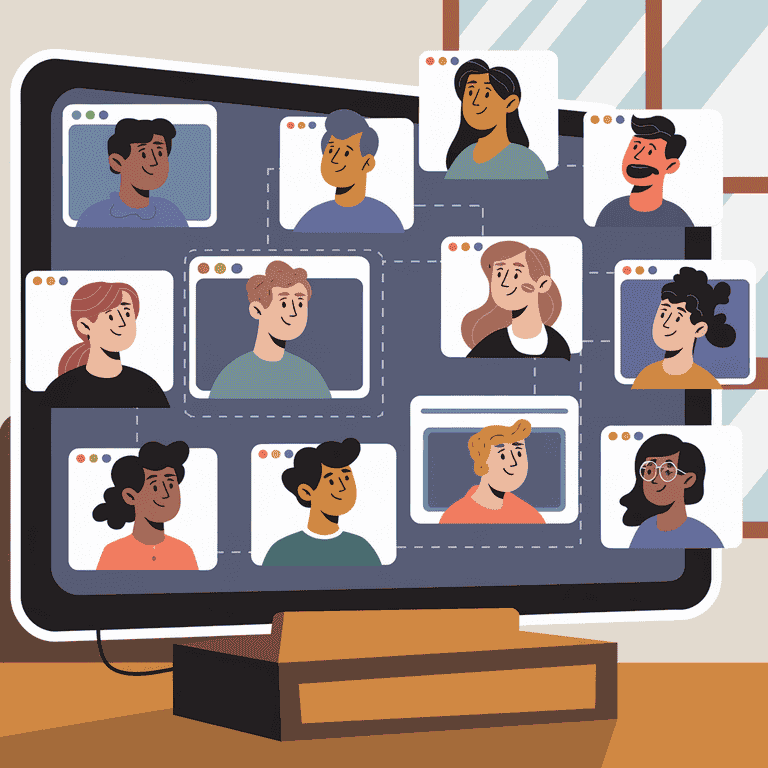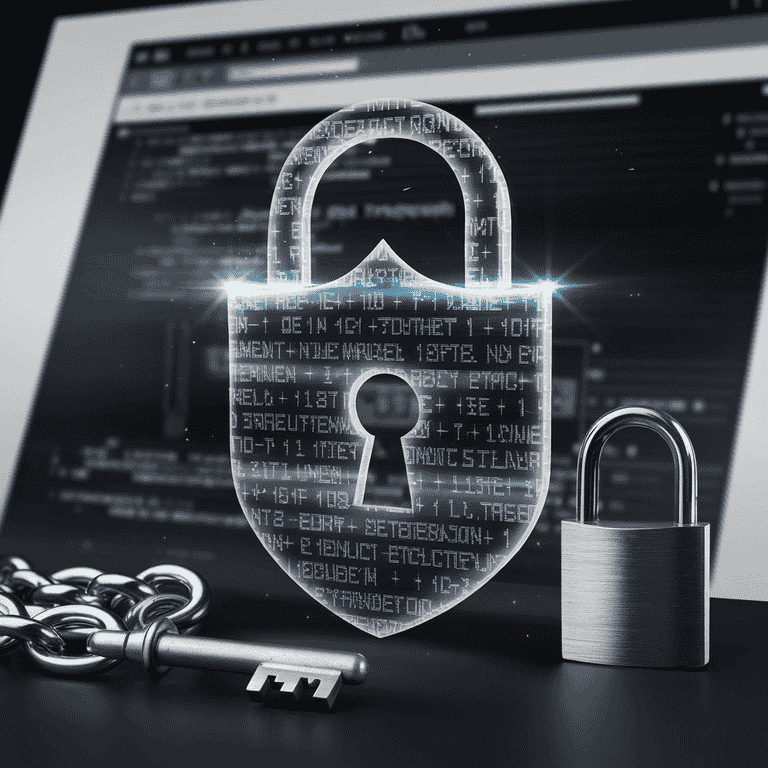Cyberstalking is a growing concern in today’s digital world. What was once a crime mostly confined to physical stalking has evolved with the rise of technology. The Internet has made it easier for people to harass others online, often with little fear of being caught. This article explores why cyberstalking is on the rise, its contributing factors, and what can be done to combat it.
The Role of Technology Advancements
Evolution of the Internet and Digital Tools
Over the last few decades, the Internet has evolved from a simple tool for communication to a complex space that includes social networks, blogs, video-sharing platforms, and more. With the increase in online activities, individuals now have more opportunities to interact positively and negatively.
The accessibility of digital tools has made it easier to communicate, share information, and connect globally. However, these advancements have also made it simpler for cyberstalkers to target victims. They can now use technology to track, harass, and manipulate people in once unimaginable ways.
Increased Accessibility and Anonymity Online
One of the main reasons for the rise in cyberstalking is the increased internet accessibility. Most people now have smartphones or computers with constant internet access, allowing them to go online anytime and anywhere.
Another factor is anonymity. The Internet provides a shield of anonymity for stalkers, making it difficult for victims to identify their harassers. This lack of face-to-face interaction emboldens cyberstalkers, as they don’t have to worry about immediate consequences. They can harass their victims from behind the safety of a screen, which makes the behavior feel less objective and more detached from personal responsibility.
The Impact of Social Media on Cyberstalking
Rise of Social Media Platforms
Social media platforms have become an essential part of modern life. Sites like Facebook, Instagram, Twitter, and TikTok have billions of active users, making them a primary source of communication, networking, and entertainment. Unfortunately, these platforms have also provided a breeding ground for cyberstalking.
The nature of social media means that much of an individual’s life is shared publicly. Whether it’s a photo, a status update, or a location tag, the information posted online can be easily used by someone with malicious intent. Stalkers can track their victims’ movements, learn personal details, and manipulate them using the platforms designed for connection.
The Culture of Oversharing Personal Information
On social media, it’s common for users to share details of their lives—photos, locations, relationships, and even daily routines. While this may seem harmless, it opens up a window of opportunity for cyberstalkers.
By following a victim’s updates, stalkers can build a profile of their target, including where they go, who they interact with, and what they do. This information can create a sense of power and control over the victim, even if they don’t know the stalker personally. In some cases, stalkers may also use this data to create fake accounts or manipulate others into spying on the victim.

Lack of Awareness and Legal Frameworks
Inadequate Awareness of Cyberstalking Among the Public
Despite the increasing number of cyberstalking incidents, many people still need to understand what cyberstalking is and how to recognize it fully. This lack of awareness means that victims may not even realize they are being stalked until the behavior escalates.
Often, people dismiss online harassment as something that happens on the Internet and not something to be taken seriously. This misunderstanding makes it harder to identify harmful behaviors and to seek help before they become dangerous.
Gaps in Laws Addressing Online Harassment
Another reason cyberstalking continues to rise is the insufficient legal framework surrounding online harassment. Laws protecting individuals from stalking and harassment have not kept up with the rapid technological changes. In some areas, the legal definitions of stalking are outdated and don’t fully encompass behaviors such as online harassment, doxxing, or sending threatening messages through digital platforms.
Even when laws do exist, prosecuting cyberstalking can be challenging. Investigating online harassment often requires technical expertise, and cases can involve cross-border issues if the stalker is located in another country. This makes it difficult to hold perpetrators accountable, which may encourage more cyberstalkers to continue their behavior without fear of punishment.
Mental Health Issues Among Stalkers
At the core of many cyberstalking behaviors are psychological factors. Stalkers often struggle with mental health issues, such as obsessive-compulsive disorder (OCD), personality disorders, or delusional thinking. These conditions can distort their perception of relationships, leading them to believe they are entitled to attention or control over another person.
For some stalkers, their obsession with a victim may be rooted in a need to feel validated or robust. They might fixate on the idea that they can manipulate or force the victim into a relationship. In some extreme cases, stalkers may create elaborate fantasies about the victim or misinterpret interactions as signals of mutual interest.
Desire for Control and Obsession
Cyberstalkers often seek control over their victims. The anonymity of the Internet gives them the power to control information, communication, and even the victim’s sense of safety. Through relentless messaging, surveillance, and online threats, the stalker may try to create a feeling of fear and helplessness in their target.
The obsession that many stalkers develop can cause them to continuously monitor their victim’s online presence, sending messages and checking in on social media profiles. For them, it’s not about a one-time interaction—it becomes an ongoing need to exert control over the victim’s life, often without actual contact.
How These Psychological Elements Drive Stalking Behaviors
The combination of mental health issues and a desire for control can push stalkers to engage in behaviors that may seem irrational or extreme. The Internet offers a low-risk environment where stalkers can continue pursuing without facing immediate consequences.
For victims, this can feel like an unending nightmare. The victim may try to ignore the harassment, but the constant online presence of the stalker may feel overwhelming. In severe cases, this can escalate to threats, doxxing (releasing private information), or even physical stalking in real life.

The Influence of Digital Culture and Online Communities
Role of Online Forums and Group Dynamics
The rise of online communities and forums has also significantly contributed to cyberstalking. Some online spaces encourage toxic behaviors, such as trolling, harassment, and revenge. These forums can give stalkers a sense of validation, as they may receive approval or support from other like-minded individuals.
In many cases, cyberstalkers join these communities to discuss their targets, share harassment strategies, or find others who share their mindset. The echo chamber effect within these communities can make them feel justified in their actions, fueling their behavior and making it harder for the victim to escape.
Encouragement of Harmful Behaviors in Certain Communities
Certain online groups or subcultures may celebrate harmful or aggressive behaviors, including stalking and harassment. These communities may normalize these actions, making it easier for stalkers to justify their actions to themselves and others.
For example, some people engage in “digital revenge” by using the Internet to settle personal grievances. They might use social media to humiliate their victim, share embarrassing information, or spread lies. The culture of online harassment can encourage individuals to see these actions as harmless fun when, in fact, they are deeply damaging to the victim.
Cyberstalking as a Form of “Digital Revenge” or Harassment
In many cases, cyberstalking is driven by a desire for revenge. Someone who feels slighted or rejected may take to the Internet to exact vengeance on the person they believe wronged them. This can be especially true in cases of failed relationships or business disputes.
Digital revenge can take many forms, from spreading rumors and posting embarrassing photos to sending threatening messages. The goal is to harm the victim’s reputation or make them suffer emotionally, and the ease of doing so online only amplifies the behavior.
Prevalence of Cyberstalking Among Vulnerable Groups
Higher Risk for Women, Minors, and Certain Minorities
Certain groups are more likely to be targeted by cyberstalkers. Women, in particular, are disproportionately affected by online harassment. Studies have shown that women are more likely to be stalked online, often by ex-partners, strangers, or acquaintances.
Minors are also at a high risk, especially as they are often less experienced with online safety. Cyberstalkers may exploit young people’s naivety or lack of awareness to gain access to personal information or manipulate them.
Minority groups, including people of color and members of the LGBTQ+ community, are also frequent targets of online harassment. Cyberstalkers may target these individuals due to prejudice, discrimination, or a desire to intimidate.
Targeting Through Personal Data and Online Profiles
Cyberstalkers often exploit the vast amounts of personal data available online. Social media profiles, public records, and even information shared in online forums can be used to build a profile of the victim.
Stalkers can use this information to track the victim’s whereabouts, monitor their activities, and even contact people in the victim’s network. This makes it more difficult for victims to protect themselves, as their details are readily accessible to anyone online.
Why Certain Individuals Are More Likely to Be Targeted
Cyberstalkers often target individuals who have a visible online presence. This can include public figures, social media influencers, or anyone who shares much personal information online. The more a person shares, the more vulnerable they become to online predators.
Additionally, people who have experienced previous harassment or abuse may be more likely to be targeted. Stalkers may see these individuals as easier targets or believe they can manipulate them more effectively.

What Can Be Done to Reduce Cyberstalking
Steps Individuals Can Take to Protect Themselves Online
While the Internet can feel dangerous, there are several ways to protect yourself from becoming a victim of cyberstalking. Taking proactive steps to secure your online presence can make a big difference.
1. Strengthen Privacy Settings:
Most social media platforms offer privacy settings that allow you to control who can see your posts and personal information. Make sure these settings are configured to limit access to only people you trust.
2. Be Mindful of What You Share:
Be cautious about what personal information you share online. Avoid posting your exact location, especially when you’re out in public. Refrain from sharing sensitive information like phone numbers or personal identifiers.
3. Use Strong Passwords:
Ensure that all your online accounts are protected with strong, unique passwords. Consider using a password manager to keep track of them securely.
4. Report Harassment:
If you experience cyberstalking, report it to the platform administrators immediately. Most social media sites have options to block or report harassing users, and taking action early can help prevent the situation from escalating.
5. Consider Using Encryption Tools:
For sensitive communications, use encryption tools that make it harder for others to intercept your messages. This adds an extra layer of protection for your personal information.
Role of Social Media Companies in Preventing Harassment
Social media companies play a critical role in reducing cyberstalking. They can monitor activity, flag suspicious behavior, and block users who engage in harassment.
1. Improve Reporting Systems:
Social media platforms should make reporting harassment simpler and more efficient. They should also ensure that reports are taken seriously and addressed promptly.
2. Increase Awareness and Education:
Platforms should provide resources to educate users on online safety, including tips for recognizing and preventing cyberstalking. Guidance on how to use privacy settings and reporting features can also help users protect themselves.
3. Take Stronger Action Against Perpetrators:
Platforms must take stronger action against cyberstalkers. This could include temporary suspensions, permanent bans, and even reporting perpetrators to authorities when necessary.
4. Invest in Technology to Detect Abusive Behavior:
Using AI and machine learning, social media platforms can better detect patterns of harassment. These technologies can help identify cyberstalking behaviors early, even before a victim has reported them.
Importance of Stronger Laws and Regulations
Cyberstalking is a crime, and the laws must evolve to address this growing issue. While some jurisdictions have started to update their legal frameworks, there is still a long way to go to ensure that cyberstalking is adequately prosecuted.
1. Update Legal Definitions of Stalking:
Laws regarding stalking need to include online harassment behaviors. Many existing laws focus primarily on physical stalking, which leaves out the online threats, monitoring, and manipulation that are now familiar forms of stalking.
2. Strengthen International Cooperation:
Cyberstalking often crosses national borders, making it difficult to prosecute. Countries should collaborate more closely to ensure that perpetrators cannot escape justice simply by being in a different jurisdiction.
3. Increase Penalties for Cyberstalking:
Penalties for cyberstalking should reflect the severity of the crime. Stalkers should face serious consequences that match the emotional and psychological toll their actions take on victims.
4. Provide Victims with Legal Support:
More accessible resources, such as legal aid, victim support services, and counseling, should be available for cyberstalking victims. Navigating the legal system can be overwhelming, and victims need assistance to protect their rights and safety.

Breaking It All Down
Cyberstalking is on the rise for several reasons, including advancements in technology, the growth of social media, and inadequate legal protections. It is a severe issue that affects many vulnerable individuals, often causing long-term psychological harm. However, there are steps individuals can take to protect themselves. Social media platforms can implement better safeguards, and laws can be strengthened to hold cyberstalkers accountable. By working together—individuals, tech companies, and lawmakers—we can combat this growing problem and create a safer digital space for everyone.

Frequently Asked Questions
What are the signs that I might be a victim of cyberstalking?
Some common signs include receiving frequent unsolicited messages or threats, being monitored online (such as tracking your activities on social media), and having private information shared without your consent. If the person harassing you continues to contact you despite your requests to stop, this could also be a red flag.
Is cyberstalking the same as online bullying?
While both involve harmful online behaviors, cyberstalking is typically more persistent and invasive, often involving continuous monitoring, threats, and the intention to control or harm the victim. Online bullying may be more about occasional harassment or insults, whereas cyberstalking tends to be an ongoing issue.
Can cyberstalking happen on all social media platforms?
Yes, cyberstalking can happen on any platform where individuals interact, including Facebook, Instagram, Twitter, and even gaming networks. The nature of online interactions makes it easy for stalkers to follow their victims and engage in harmful behaviors.
What should I do if I believe someone is cyberstalking me but I don’t want to involve the authorities?
First, document all instances of harassment. Save any threatening messages, emails, or screenshots. You should also block the person on social media and report the behavior to the platform. If the situation escalates or you feel unsafe, consider involving law enforcement.
Are there any tools or services that can help me protect my privacy online?
Yes, there are several tools and services designed to protect your privacy. You can use VPNs (Virtual Private Networks) to mask your location and online activity, privacy management tools on social media platforms, and password managers to secure your accounts. Additionally, certain services offer identity theft protection, which can help you monitor for any misuse of your personal information.
What legal actions can I take if I am a victim of cyberstalking?
If you’re a victim of cyberstalking, you can report the incident to law enforcement. Depending on your location, laws may allow you to obtain a restraining order or file charges against the stalker. In some cases, civil suits for harassment or emotional distress may also be an option.
Can a cyberstalker be prosecuted?
Yes, in many jurisdictions, cyberstalking is a criminal offense. Prosecuting a cyberstalker often requires evidence of harassment, such as threatening messages, continuous monitoring, or invasion of privacy. The specific laws vary by location, so it’s important to check local laws for more information.
How can social media companies help prevent cyberstalking?
Social media companies can implement stronger reporting mechanisms, increase awareness about online harassment, and take swift action against perpetrators. Many platforms already have policies that allow users to block or report harassing accounts. The companies could also enhance their AI technologies to detect and remove harmful content more proactively.
Are there any support groups or organizations for victims of cyberstalking?
Yes, there are numerous organizations and support groups available to help victims of cyberstalking. These groups offer legal advice, counseling, and emotional support. Some well-known organizations provide resources and assistance for people dealing with harassment and stalking both online and offline.
How can I prevent someone from stalking me online in the future?
To reduce the risk of being stalked online, regularly review and adjust your privacy settings, be selective about what personal information you share online, and be cautious about connecting with strangers. Consider using different usernames and accounts for personal and professional activities.

Additional Resources for You from The Rosenblum Allen Law Firm.
In addition to the resources already mentioned, our lead attorney, Molly Rosenblum Allen, Esq., has created several other valuable guides to assist you during this challenging time:
- Criminal Defense Attorneys: Comprehensive guidance on various criminal defense strategies and procedures.
- Las Vegas DUI Lawyer: Effective advice on handling DUI charges in Las Vegas, including potential defenses and consequences.
- Domestic Violence Lawyer Las Vegas: Information on domestic violence laws, protective orders, and defense strategies.
- Drug Possession Lawyer: Insights into drug possession laws, penalties, and potential defense approaches.
- Sex Crimes Attorney: Detailed information on sex crime laws, defenses, and the legal process.
- CPS Defense Attorney: Guidance on dealing with Child Protective Services investigations and related legal issues.
- Misdemeanor Lawyer: Information on misdemeanor charges, their potential impacts, and defense strategies.
- Las Vegas Warrant Defense Attorney: Advice on handling outstanding warrants and navigating the legal system.
- Las Vegas Probation Violation Attorney: Guidance on probation terms, violations, and potential consequences.
- Theft Crime Defense Lawyer: Information on various theft crimes, their penalties, and possible defenses.
- Kidnapping Lawyers: Detailed explanation of kidnapping laws, penalties, and defense strategies.
- Juvenile Defense Lawyers: Specialized information on juvenile law, procedures, and defense approaches.
- Firearms Lawyer Las Vegas: Guidance on firearm laws, rights, and legal issues related to gun ownership and use.
These resources are designed to provide you with valuable information and support as you navigate your legal journey. We encourage you to explore these guides to gain a better understanding of your situation and options.

Offsite Resources for You
- StopBullying.gov: A comprehensive government website offering information and resources on bullying and cyberbullying prevention.
- Common Sense Media: Provides resources for parents and educators on digital citizenship and online safety.
- Cyberbullying Research Center: Offers up-to-date information on the nature, extent, causes, and consequences of cyberbullying.
- PACER’s National Bullying Prevention Center: Provides resources for parents, schools, teens and youth to address bullying.
- NetSmartz: An educational program by the National Center for Missing and Exploited Children that provides age-appropriate resources to help teach children how to be safer online.
- ConnectSafely: Offers research-based safety tips, advice, news and commentary on all aspects of tech use and policy.
- National Crime Prevention Council: Provides resources and information on various crime prevention topics, including cyberbullying.

A Special Message from Our Lead Attorney, Molly Rosenblum Allen, Esq

Dear Reader,
If you’re facing a situation related to cyberbullying or any other legal matter, please know that you don’t have to face it alone. My team and I are here to help guide you through the legal process with expertise and compassion.
I invite you to take the next step and give us a call at (702) 433-2889. We can discuss your situation, answer your questions, and start working on a strategy tailored to your specific needs.
Remember, taking action is the first step towards resolution. We’re ready to listen and provide the professional legal support you deserve.
I look forward to the opportunity to assist you.
Warm regards,
Molly Rosenblum Allen, Esq.






